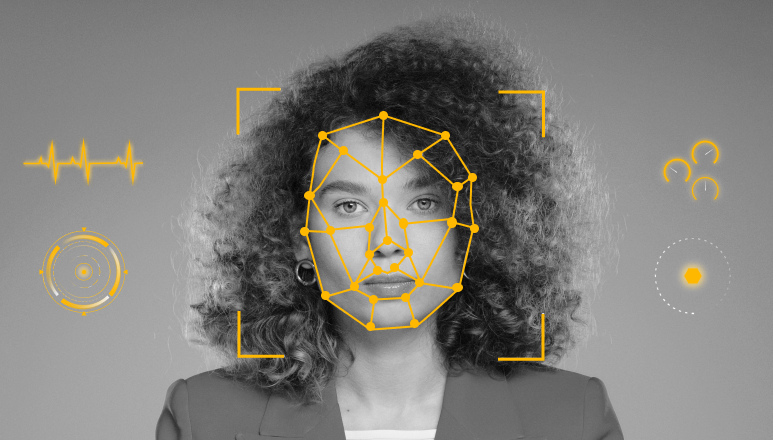Understanding Face Reading
Face reading, also referred to as physiognomy, involves interpreting an individual’s facial features to gain insights into their personality, emotions, and potential future experiences.
How acquainted are you with the concept of face reading?
Many people believe that a person’s face provides insights into their character. A survey 2 conducted among undergraduates in the 1970s revealed that 90% of students considered the face a valid guide to character, a percentage that decreased to about 75% in a study 2 conducted in 2000.
People tend to make assumptions about individuals based on their facial features. For instance, adults with “baby faces 3” are often perceived as more innocent and trustworthy.
Additional research 4 suggests that certain faces appeal to us because they are familiar, align with our attractiveness standards, and convey information about the other person’s hormone levels and fertility.
Is Face-Reading a Scientific Practice or Pseudoscience?
Various cultures have practiced face reading for centuries. However, traditional face-reading methods fall into the pseudoscience 5 category, lacking empirical support. This article will still delve into these practices, allowing you to form your own opinion.
Modern approaches to face reading with more scientific credibility have emerged, particularly with advancements in AI technology 6 related to understanding facial expressions.
If you find face reading intriguing, you might also be interested in exploring the power of reading body language.
Exploring Different Scientific Face Reading Techniques
Through scientific studies, we can make informed conjectures about what specific facial features may reveal about a person. While none of these are infallible, they represent patterns observed across many individuals.
Facial Symmetry
Several studies attempted to correlate face symmetry 2 with the Big 5 personality test.
The findings are as follows:
- Symmetrical face = more extroverted.
- Asymmetrical face = more open (indicating a willingness to explore new ideas and experiences).
- Asymmetrical face = more agreeable (reflecting compassion, cooperation, and empathy).
(Note: Multiple studies confirmed the link between face symmetry and extroversion, but results on linking asymmetrical faces with openness and agreeableness were mixed).
Faces with High Testosterone Levels in Males
One study 7 measured the width-to-height ratio on male faces, 8 revealing that 9:
- Wide faces = aggression and status-striving.
Male faces with certain testosterone-related features:
- big, square jaw
- prominent brow ridge
- high cheekbones
- thin lips
- tall forehead
Males with these features tend to:
- strong immune systems
- be avoidant in romantic relationships
- feel lonely
- act dominantly
- take financial risks 10
Faces with High Estrogen Levels in Females
High estrogen levels in females are associated with specific facial features, such as:
- full lips
- smooth skin 11
- round faces
- small noses
- small chins
Females with these features tend to be:
- empathetic
- emotionally sensitive
- verbally articulate
- sociable
Reading Microexpressions to Understand Emotions
A modern and scientifically supported approach to face reading involves interpreting microexpressions.
These brief expressions, lasting as short as half a second, provide glimpses into a person’s emotions.
Psychologist Paul Ekman 12 identified 7 universal emotions, each with a distinct microexpression.
- Happiness
- Sadness
- Fear
- Anger
- Contempt
- Disgust
- Surprise
For a written guide on the science of face-reading microexpressions, click here. Additionally, learn how to interpret microexpressions when individuals wear face masks.
Chinese Face Reading
Now, let’s explore face-reading techniques rooted in the Chinese belief system. It’s important to note that these methods lack scientific backing.
Facial Shape and Structure
In Chinese face reading, the overall face shape holds great significance:
– Round face = kindness, compassion, and a sense of community.
– Square face = authority, strength, and practicality.
– Oval face = balanced, harmonious, and graceful.
– Rectangular or long face = logical and hardworking.
Eyes
Eyes are considered the windows to the soul in Chinese face reading, with size, shape, and placement providing insights:
– Large eyes = passion, generosity, and vitality.
– Small eyes = focus, precision, and introversion.
– Round eyes = curiosity, enthusiasm, and a youthful spirit.
– Almond-shaped eyes = wisdom, tolerance, and a balanced personality.
Nose
The nose, symbolizing wealth and fortune, plays a prominent role in Chinese face reading:
– Big nose = ambition, leadership qualities, and potential for great wealth.
– Small nose = sensitivity, kindness, and introversion.
– Wide nose = grounded, solid, and practical.
– Narrow nose = precision and delicacy.
Mouth and Lips
The mouth and lips provide crucial indicators of personality and communication style in Chinese face reading:
– Full lips = generosity and a love for life.
– Thin lips = emotional restraint or introversion.
– Wide mouth = gregarious and extroverted.
– Small mouth = selective, discerning nature.
Limitations of Face Reading
Despite its intrigue, face reading has significant limitations and challenges.
Traditional forms (Chinese, Vedic, and Astrological face reading) lack empirical evidence and are often dismissed as pseudoscience by the scientific community.
A study 13 suggests that individuals who believe in face reading may also hold a biologically deterministic view of personality.
Historical Context of Face Reading Across Cultures
Face reading has deep roots in various cultures:
– Chinese face reading spans millennia, linking to traditional Chinese medicine.
– In India, Vedic face reading is rooted in ancient scriptures like the Vedas.
– Ancient Greeks 14 practiced face reading, with figures like Pythagoras using it to assess character.
Face reading is resurfacing in the mainstream due to AI researchers attempting to develop technology capable of discerning human personalities from images. One group 15 aims to create AI distinguishing faces of individuals who have committed crimes from those who haven’t, though scientific validation is pending.
Frequently Asked Questions About Face Reading
What is face reading?
Face reading is the interpretation of facial features to gain insights into a person’s character, emotions, or potential. This tradition spans various cultures and philosophies, from ancient Chinese thought to modern psychology.
How does face reading work?
Face reading involves analyzing specific facial features, such as eyes, nose, lips, and overall facial shape, to deduce an individual’s qualities or tendencies.
What are the key facial features that face readers analyze?
Key facial features include eyes, nose, lips, cheeks, forehead, and overall facial shape, all believed to indicate specific personality traits, emotions, or potential.
Can face reading accurately reveal someone’s personality traits?
While face reading claims to reveal personality traits based on facial features, the accuracy of these interpretations is widely debated. Scientific evidence supporting face reading’s reliability in predicting personality traits is limited.
Is face reading a scientific practice or a pseudoscience?
Face reading is generally considered a pseudoscience by the scientific community due to a lack of empirical evidence and rigorous testing. While it may offer
Key Insights on Face Reading
- Scientific Reports on Personality Differences:
– Face symmetry and hormone levels (testosterone and estrogen) have been linked to personality differences. Studies indicate correlations between symmetrical faces and extroversion, as well as specific facial features associated with high testosterone in males and high estrogen in females.
- Interpreting Microexpressions:
– Microexpressions, brief facial expressions lasting as short as half a second, provide insights into emotions. Recognizing these expressions can help understand the seven universal emotions: happiness, sadness, fear, anger, contempt, disgust, and surprise.
- Traditional Chinese and Vedic Face Reading:
– Traditional Chinese and Vedic face reading practices have been employed for centuries to interpret personalities and predict futures. However, these methods lack empirical support and are often considered pseudoscience by the scientific community.
- Integration of Face Reading in AI Technology:
– AI researchers are actively exploring the integration of face reading into predictive technology. Their efforts aim to develop artificial intelligence capable of discerning human personalities and potentially distinguishing between individuals who have committed crimes and those who haven’t.
These takeaways showcase the diverse perspectives on face reading, ranging from traditional practices rooted in cultural beliefs to modern scientific endeavors leveraging AI technology. While some aspects have empirical support, others remain speculative, underscoring the complexity and ongoing exploration of this intriguing field.
MICRO EXPRESSIONS AND LIE DETECTION IN POKER
- https://www.nature.com/articles/s41598-020-65358-6
- https://www.sciencedirect.com/science/article/abs/pii/S019188690700164X?via%3Dihub
- https://www.ncbi.nlm.nih.gov/pmc/articles/PMC4020290/
- https://www.ncbi.nlm.nih.gov/pmc/articles/PMC3130383/
- https://plato.stanford.edu/entries/pseudo-science/
- https://www.researchgate.net/publication/366020114_Face_Reading_with_AI_Artificial_Intelligence
- https://www.sciencedirect.com/science/article/abs/pii/S1090513813000275
- https://www.livescience.com/41373-science-assesses-sexiest-man-alive.html
- https://www.sciencedirect.com/science/article/abs/pii/S0092656614000269#:~:text=High%20testosterone%20was%20associated%20with,mediated%20by%20attachment%2Drelated%20avoidance.
- https://www.ncbi.nlm.nih.gov/pmc/articles/PMC5964298/
- https://www.ncbi.nlm.nih.gov/pmc/articles/PMC2685269/
- https://www.paulekman.com/resources/universal-facial-expressions/
- https://journals.sagepub.com/doi/10.1177/1948550617734616
- https://blogs.getty.edu/iris/physiognomy-the-beautiful-pseudoscience/#:~:text=Physiognomy%20has%20its%20roots%20in,and%20round%20faces%20signaled%20courage.
- https://medium.com/@blaisea/physiognomys-new-clothes-f2d4b59fdd6a



